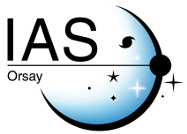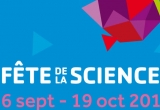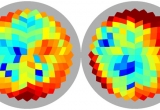After a fascinating sequence, with a descent phase perfectly as planned and an impact at a few tens of metres from the selected site followed by two rebounds, Philae finally stopped in a hollow surrounded by cliffs, in an acrobatic position. It is the first panorama taken by the CIVA cameras developed under IAS responsibility which has demonstrated this, confirming the first major success of the mission: Philae has landed and has operated on the nucleus of comet Churyumov-Gerasimenko!
You are here
On October the 7th, one of the CIVA cameras took a new striking image of Rosetta with comet Churyumov-Gerasimenko in the background, at only 16 km. The CIVA instrument on the Philae lander (now still attached to the Rosetta orbiter) is a suite of cameras which were developed under IAS responsibility.
IAS is participating to the national open lab day "Fête de la Science" in the week of the 6th of October. After visits by students from several schools, the laboratory will be open for the general public on Sunday the 12th of October, from 2 to 6PM.
The Planck consortium has published a statistical analysis of the dust polarization towards the regions of the sky best suited to measure Cosmic Microwave Background polarization. This work shows that dust polarization is significant over all of the sky, and that the signature of cosmic inflation will not be detected unless contamination associated with the dusty and magnetized interstellar medium in the Galaxy is removed with the required accuracy and confidence.
The target region of Rosetta’s lander Philae has been selected: the site offers a unique scientific potential with hints of activity nearby, minimum risks to the lander and good conditions to exploit energy resources. Landing is scheduled for November 11.








